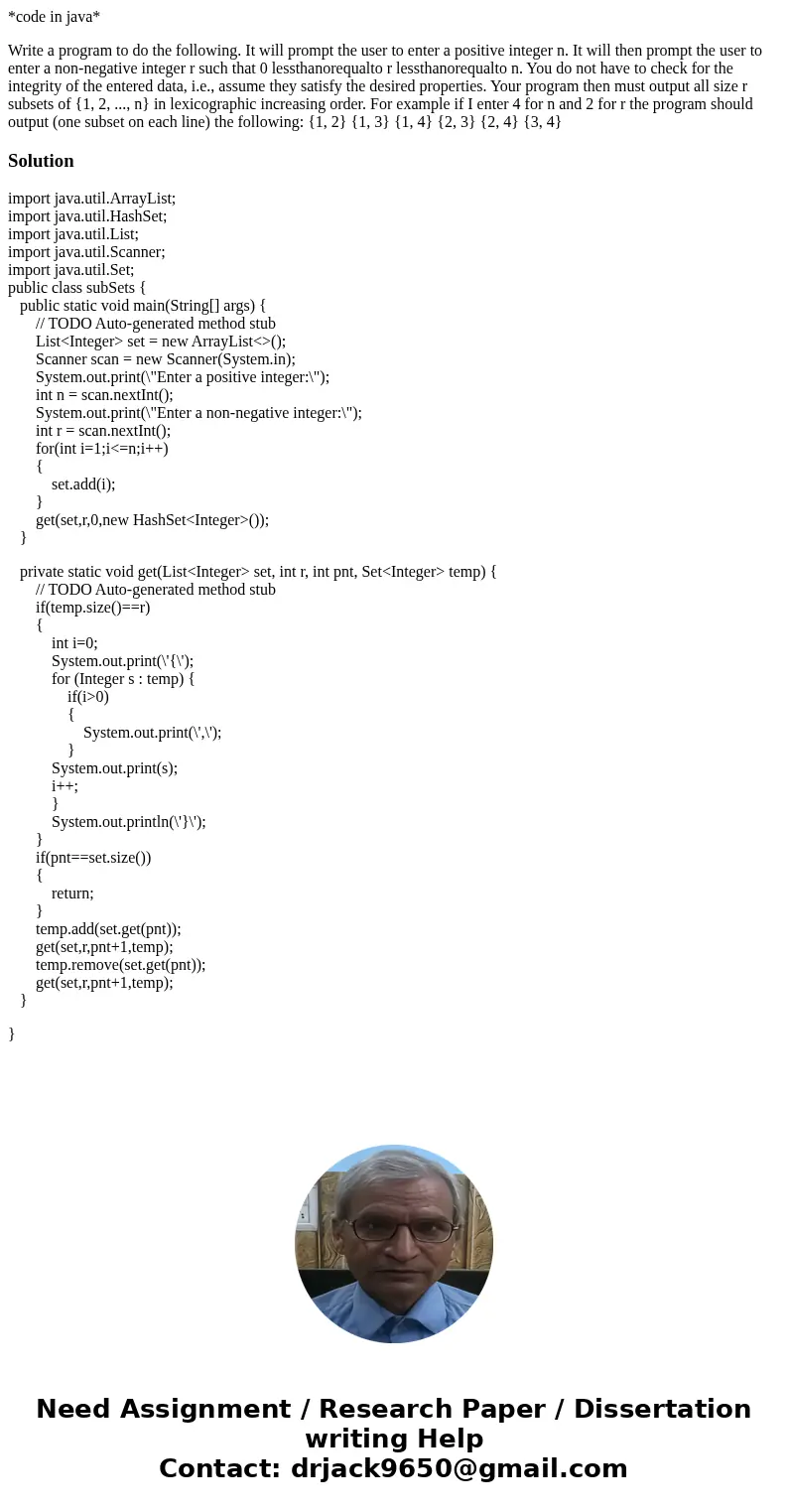code in java Write a program to do the following It will pro
*code in java*
Write a program to do the following. It will prompt the user to enter a positive integer n. It will then prompt the user to enter a non-negative integer r such that 0 lessthanorequalto r lessthanorequalto n. You do not have to check for the integrity of the entered data, i.e., assume they satisfy the desired properties. Your program then must output all size r subsets of {1, 2, ..., n} in lexicographic increasing order. For example if I enter 4 for n and 2 for r the program should output (one subset on each line) the following: {1, 2} {1, 3} {1, 4} {2, 3} {2, 4} {3, 4}Solution
import java.util.ArrayList;
import java.util.HashSet;
import java.util.List;
import java.util.Scanner;
import java.util.Set;
public class subSets {
public static void main(String[] args) {
// TODO Auto-generated method stub
List<Integer> set = new ArrayList<>();
Scanner scan = new Scanner(System.in);
System.out.print(\"Enter a positive integer:\");
int n = scan.nextInt();
System.out.print(\"Enter a non-negative integer:\");
int r = scan.nextInt();
for(int i=1;i<=n;i++)
{
set.add(i);
}
get(set,r,0,new HashSet<Integer>());
}
private static void get(List<Integer> set, int r, int pnt, Set<Integer> temp) {
// TODO Auto-generated method stub
if(temp.size()==r)
{
int i=0;
System.out.print(\'{\');
for (Integer s : temp) {
if(i>0)
{
System.out.print(\',\');
}
System.out.print(s);
i++;
}
System.out.println(\'}\');
}
if(pnt==set.size())
{
return;
}
temp.add(set.get(pnt));
get(set,r,pnt+1,temp);
temp.remove(set.get(pnt));
get(set,r,pnt+1,temp);
}
}

 Homework Sourse
Homework Sourse